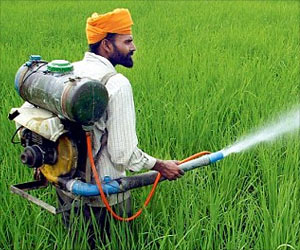Exposure to carcinogenic chemicals in day-to-day life: Agricultural pesticides increase the burden of cancer among farmers just like smoking.

Comprehensive assessment of pesticide usage patterns and increased cancer risk
Go to source).
Advertisement
Are Pesticides Equivalent to Smoking in Raising Cancer Risk?
“In our study we found that for some cancers, the effect of agricultural pesticide usage is comparable in magnitude to the effect of smoking,” said the study’s senior author, Dr. Isain Zapata, associate professor at the Rocky Vista University, College of Osteopathic Medicine in Colorado.“We accept that a person who is not a farmer living in a community with heavy agricultural production is exposed to many of the pesticides used in their vicinity. It becomes part of their environment,” Zapata said.
The researchers found that in such an environment, the impact of pesticide use on cancer incidence rivaled that of smoking. They strongest association was among Non-Hodgkins lymphoma, leukemia, and bladder cancer. In these types of cancers, the effects of pesticide exposure were more pronounced than the effects of smoking.
“We present a list of major pesticide contributors for some specific cancers, but we highlight strongly that it is the combination of all of them and not just a single one that matters,” Zapata pointed out.
Advertisement
Pesticide Cocktails
Because pesticides aren’t used one at a time, the researchers said it is unlikely that one alone is to blame. Although some pesticides are discussed more frequently than others, all – and mostly their combination – can have an impact. Accordingly, the researchers included 69 pesticides for which use data is available via the United States Geological Survey. “In the real world, it is not likely that people are exposed to a single pesticide, but more to a cocktail of pesticides within their region,” Zapata said.The researchers said their study is the first comprehensive evaluation of cancer risk from a population-based perspective at a national level. So far, no large-scale study had examined the big picture and put pesticide use in context with a cancer risk factor that is no longer questioned, in this case smoking. “It is difficult to explain the magnitude of an issue without presenting any context, so we incorporated smoking data. We were surprised to see estimates in similar ranges,” Zapata said.
Advertisement
Cancer Risk from Pesticides: Seeing the Bigger Picture
The researchers said that while their study extends knowledge about pesticide use in the US, cancer risk factors are complicated and assessing the big picture may not reflect individual outcomes. For example, geography has a strong impact. In regions where more crops are grown, such as the Midwest, which is famous for its corn production, the associations between pesticides and cancer incidence were more striking.Getting people, also those who are not exposed to pesticides frequently, to think about the problems pesticide use poses in a bigger context is one of the researchers’ goals.
“Every time I go to the supermarket to buy food, I think of a farmer who was part of making that product. These people often put themselves at risk for my convenience and that plays a role in my appreciation for that product. It definitely has had an impact on how I feel when that forgotten tomato in the fridge goes bad and I have to put it in the trash,” said Zapata.
References:
- Comprehensive assessment of pesticide usage patterns and increased cancer risk - (https://www.frontiersin.org/journals/cancer-control-and-society/articles/10.3389/fcacs.2024.1368086/full)
Source-Eurekalert















